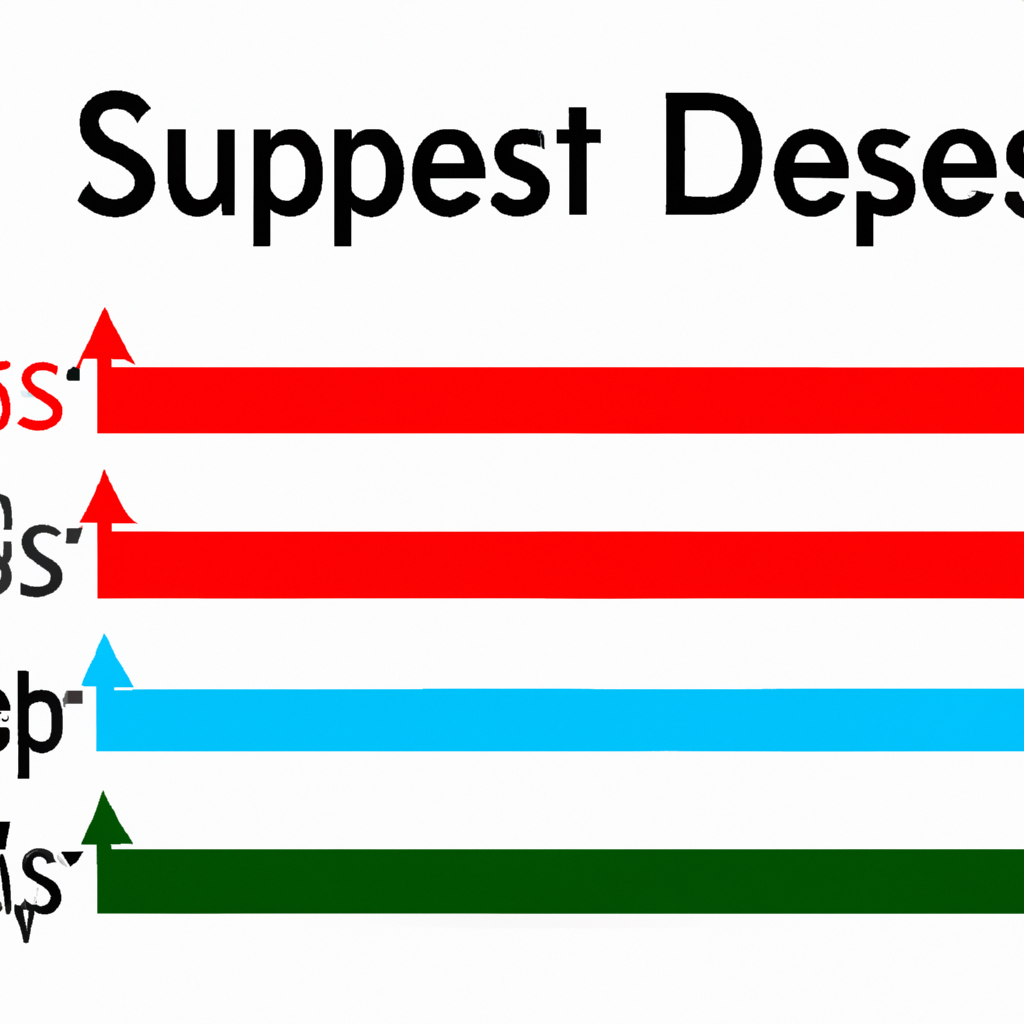Understanding Support and Resistance Levels in Trading
Introduction
Support and resistance levels are important concepts in technical analysis that help traders identify potential price levels where buying or selling pressure may emerge. These levels are widely used by traders to make informed decisions about entry and exit points in the market. In this article, we will explore what support and resistance levels are and how they can be effectively used in trading strategies.
What are Support and Resistance Levels?
Support levels refer to price levels at which buying pressure is expected to be strong enough to prevent the price from falling further. It is considered a level at which demand exceeds supply, causing the price to bounce back up. On the other hand, resistance levels are price levels at which selling pressure is expected to be strong enough to prevent the price from rising further. These levels represent a point where supply exceeds demand, causing the price to reverse downward.
Identifying Support and Resistance Levels
There are several methods traders use to identify support and resistance levels. Some common techniques include:
1. Swing Highs and Lows
One way to identify support and resistance levels is by analyzing swing highs and lows on a price chart. Swing highs are the peaks formed when the price reaches a certain level and starts to decline, while swing lows are the troughs formed when the price reaches a certain level and starts to rise. By connecting these swing highs or lows, traders can identify potential levels of support and resistance.
2. Moving Averages
Moving averages can also be used to identify support and resistance levels. Traders often look for price reactions near moving averages, such as the 50-day or 200-day moving average. If the price consistently bounces off a moving average, it can be considered a support or resistance level.
3. Psychological Levels
Psychological levels are price levels that are significant due to their round numbers or historical importance. For example, a price level like $100 or $1000 might act as a strong psychological level where traders expect the price to encounter resistance or support.
Utilizing Support and Resistance Levels in Trading
Once support and resistance levels are identified, traders can utilize them in various ways to make trading decisions. Here are a few common strategies:
1. Breakouts
When the price breaks above a resistance level or below a support level, it is known as a breakout. Traders often interpret breakouts as potential signals to enter a trade in the direction of the breakout, expecting the price to continue moving in that direction.
2. Bounces
When the price reaches a support level, traders may look for signs of buying pressure and expect the price to bounce back up. Similarly, when the price reaches a resistance level, traders may anticipate selling pressure and expect the price to reverse downward. This strategy involves entering trades based on the price bouncing off support or resistance levels.
3. Support and Resistance Zones
Instead of focusing on specific levels, traders can also consider support and resistance zones. These are areas where the price has historically shown a tendency to reverse. By using zones instead of precise levels, traders account for minor price fluctuations and increase the probability of successful trades.
Conclusion
Support and resistance levels play a crucial role in technical analysis and trading strategies. They provide traders with valuable insights into potential price levels where significant buying or selling pressure may occur. By effectively identifying and utilizing these levels, traders can enhance their decision-making process and improve their overall trading performance.

